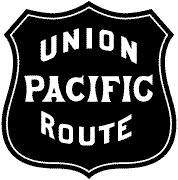Nordstrom has since grown into a national department store. Frederick and Nelson, long owned by Marshall Field, was shuttered in 1992. The Bon, like so many other department stores in the United States, is now known as Macy's.
The Bon Marche was owned by Allied Stores from 1929 to 1989 when Federated Department Stores bought Allied. Federated later bought R. H. Macy and Co.
A good website for historic photos of these department stores is pdxhistory.com
The Frederick and Nelson logo never changed much, keeping its cursive type face and early 20th century feel.
The Nordstrom logos have always shown the name in a crisp, understated design. The early logos displayed the company name as a possessive proper noun with an initial capital letter. A later version was all lower case, and currently the logo is all upper case. The font has changed repeatedly. I like the elegance of the current version.
(Photo from a Seattle PI article on the history of Nordstrom).

The Bon Marche logo is somewhat unusual in having a different font for each word.
In the 1980s, a new logo used a much more modern type face as well as the company's nickname.
In 2003 Federated Department Stores decided to re-brand most of their department stores as Macy's. For a year, the Bon had hypenated logos, trying to get customers used to the new look.
Not everyone was pleased with the change. (I like that they thought the logos said it all, no need for further explanations.)
The next year, the Bon name was retired and the Macy's logo with a red star took over.
Old habits are hard to break. I still hear people say, "I am going to the Bon, I mean Macy's".











 An early logo from 1884. It looks very Victorian.
An early logo from 1884. It looks very Victorian.













